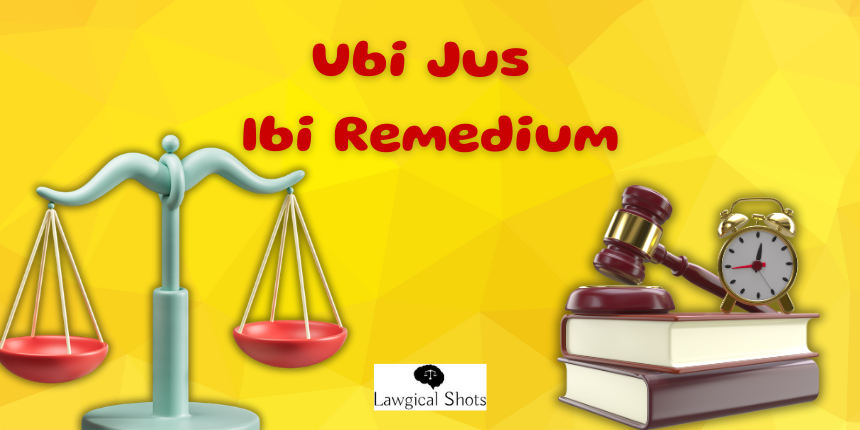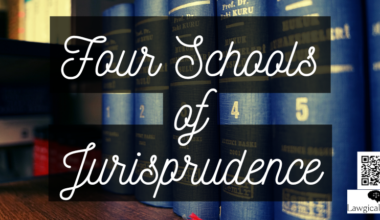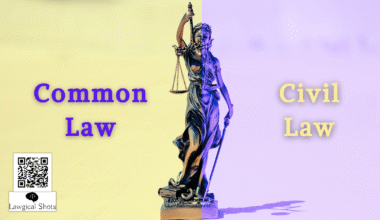Ubi Jus Ibi Remedium is a Latin Maxim wherein each word has a distinct meaning in English and indicates the doctrine behind it. Let’s break one word at a time to understand ubi jus ibi remedium meaning. “Ubi” means “where”; “jus” means “right”; “ibi” means “there”; and “remedium” means “remedy”. Hence, the Latin maxim means “Where there is a right there is a remedy”.
The law of torts is based on the maxim ubi jus ibi remedium, which means “where there is a right, there is a remedy.” Here, jus refers to the legal backing to do something, while remedium means the right to seek legal action in the Court.
Understanding Ubi Jus Ibi Remedium
This principle asserts that a person whose legal rights have been violated has the right to approach the Court for a remedy. However, it also implies that a remedy is available only when a legal right has been infringed. Simply imagining a right without a corresponding legal remedy is meaningless. While there are many moral and political wrongs, not all are legally actionable, as they may not be recognized by the law.
It is important to note that the maxim “ubi jus ibi remedium” does not mean that every wrong has a legal remedy. As Justice Stephen rightly pointed out, it would be more accurate to state it in reverse: “Where there is no legal remedy, there is no legal wrong.”
Essentials of Ubi Jus Ibi Remedium
Listed below are the essential elements for the application of legal maxim where there is a right there is a remedy:
- It applies only where a legal rights exists;
- It is applicable only when those rights have been violated. If no legal injury has happened, then this maxim will not apply.
Limitations of Ubi Jus Ibi Remedium
- This maxim does not apply where legal injury has happened due to moral or political wrongs, as they are not actionable.
- It does not apply where there is no damage caused to the legal rights.
- It does not apply in a case if the plaintiff is also negligent.
- It does not apply to public nuisance until the plaintiff shows that he has sustained more injury in comparison to the other persons.
Also explore Volenti Non Fit Injuria
Case Laws on Ubi Jus Ibi Remedium
Donoghue v. Stevenson [1932] UKHL 100
Facts
In Donoghue v Stevenson (1932), May Donoghue, a woman in Scotland, drank ginger beer from an opaque bottle which was given to her by her friend. After consuming some, she discovered a decomposed snail in the bottle, due to which she suffered physical and psychological harm. She sued the manufacturer, David Stevenson, in negligence. Stevenson is of the opinion that, since she didn’t buy the drink herself, Donoghue couldn’t claim breach of contract.
Judgment
In Donoghue v Stevenson, the House of Lords ruled in favor of Donoghue, establishing that manufacturers have a duty of care towards consumers, even in the absence of a direct contractual relationship. Lord Atkin introduced the “neighbour principle,” which asserts that individuals must exercise reasonable care to prevent actions or omissions that could foreseeably cause harm to those who are “closely and directly affected.” The court determined that Stevenson had a responsibility to ensure his product was safe for consumer use. This landmark decision became the foundation of modern negligence law, confirming that manufacturers can be held liable for harm caused by defective products.
Link to ubi jus ibi remedium
- Right to Safety: Donoghue’s right to be safe as a consumer was violated due to the defective product. The ruling confirmed that legal rights, like protection from harm, must have enforceable remedies, even if there was no direct contract.
- Expansion of Remedies: This case introduced a new legal remedy in negligence, filling a gap where contract law did not apply. This follows the idea that rights should not be meaningless if there is no way to enforce them.
- Neighbour Principle as a Legal Rule: Lord Atkin’s principle put this idea into action by setting clear rules—such as the duty of care and foreseeability of harm—that define when rights are protected and what remedies are available.
Bhim Singh v. State of J&K (1985) – Case Summary
Facts
Bhim Singh, a Member of the Legislative Assembly (MLA) in Jammu & Kashmir, was unlawfully arrested by the police while on his way to attend an Assembly session. He was detained and not been presented to the court in the next 24hrs, violating his fundamental rights. As a result, he was unable to exercise his right to vote in the Assembly. His wife filed a habeas corpus petition under article 32 of Constitution of India seeking his release.
Judgment
The Supreme Court held that:
- Bhim Singh’s arrest was malicious and unlawful, aimed at preventing him from attending the Assembly session.
- His fundamental rights were violated, particularly his right to personal liberty under Article 21.
- The police acted in bad faith, and their actions amounted to an abuse of power.
- As a remedy, the Court awarded monetary compensation of ₹50,000 to Bhim Singh for the violation of his rights.
Relation to the Maxim ubi jus ibi remedium
The case reinforces the principle of ubi jus ibi remedium (where there is a right, there is a remedy) by recognizing that a violation of fundamental rights must be met with an appropriate legal remedy. The Supreme Court not only acknowledged Bhim Singh’s legal rights but also provided compensation as a means of redress, ensuring that the principle was upheld. This case is a landmark judgment in protecting personal liberty and enforcing fundamental rights through compensation.
Ashby v. White (1703) – Case Summary
Facts
Mr. Ashby, a qualified voter, was unlawfully prevented from casting his vote in a parliamentary election by Mr. White, a Returning Officer. Although the candidate he intended to vote for won the election, Ashby sued White for violating his right to vote.
Judgment
The House of Lords ruled in favour of Ashby, holding that:
- A legal right must have an enforceable remedy (ubi jus ibi remedium). The fact that the election result was unaffected did not diminish the importance of the right itself.
- The wrongful denial of voting rights amounted to a legal injury, even if no tangible loss occurred.
- The Returning Officer was liable for damages, reinforcing the principle that every violation of a legal right must have a corresponding remedy.
Application of ubi jus ibi remedium
The case strongly upholds the maxim ubi jus ibi remedium by affirming that the mere violation of a legal right is sufficient to warrant a remedy, even if no actual damage occurs. This judgment played a crucial role in developing the law of civil liberties and constitutional rights, ensuring that rights are not rendered meaningless due to a lack of enforcement.
Conclusion
The maxim ubi jus ibi remedium means that if a person’s legal rights are violated, they should have a way to get justice. This idea is seen in cases like Donoghue v. Stevenson, Bhim Singh v. State of J&K, and Ashby v. White, where courts provided compensation or held wrongdoers accountable. However, this rule applies only to legal rights, not moral or political issues. It helps maintain justice by ensuring that people can seek remedies when harmed. Though not absolute, this principle is important in tort law and constitutional rights, ensuring that every legal wrong has a solution.
The Legal Maxim Ubi Jus Ibi Remedium has been explained by our intern, Mr. Shubham Chandrakar. He joined the team to assist and bring informational legal blogs.








